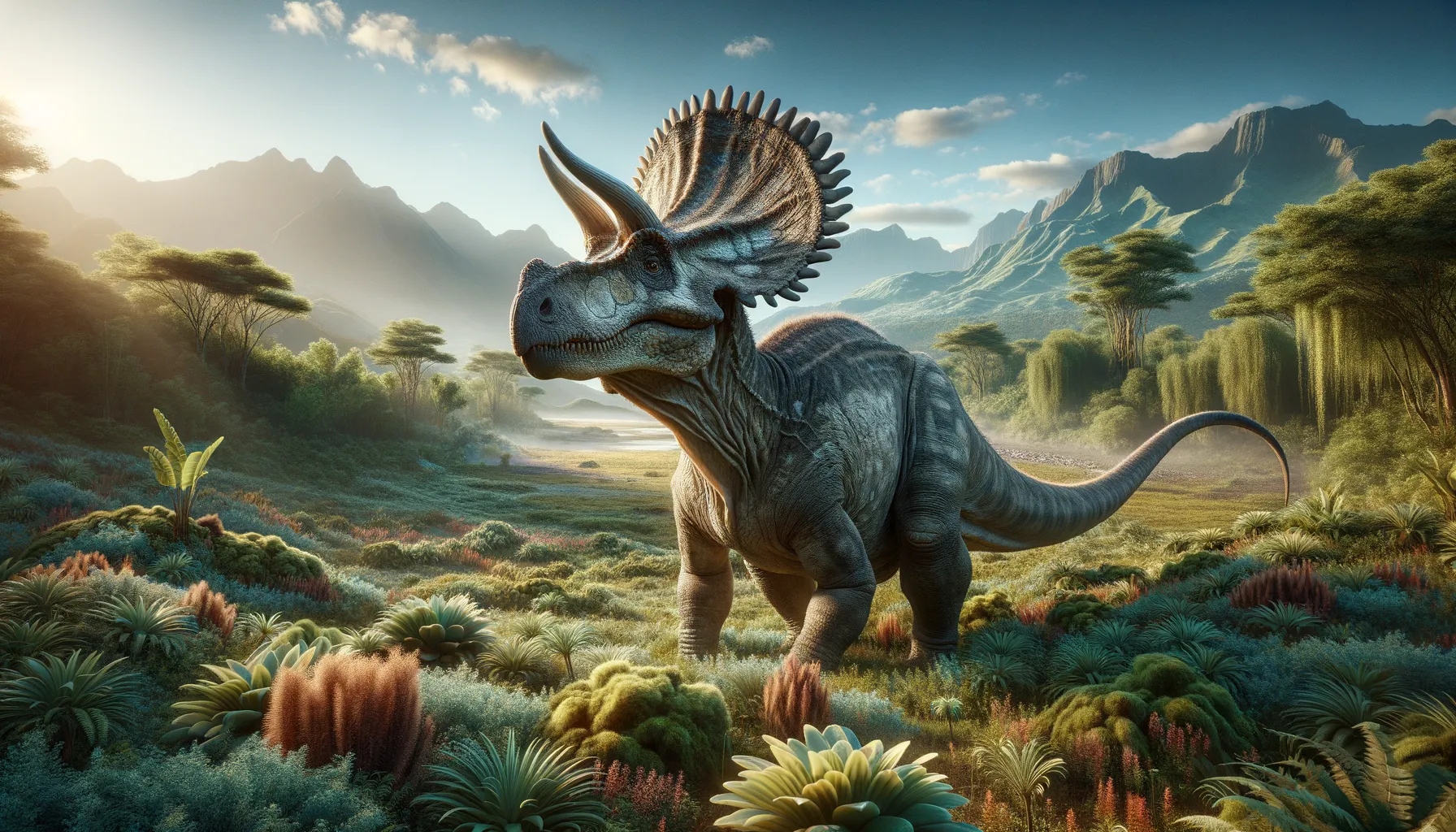
Vagaceratops
Majestic horned herbivore of ancient lands!
Period
Cretaceous
Length
About 6 meters (approximately 20 feet) long.
Height
Approximately 1.85 meters (around 6 feet) tall.
Weight
Up to 3,500 kilograms (about 7,700 pounds).
Vagaceratops was a medium-sized horned dinosaur known for its distinctive facial features, including a large frill and short, curved horns. Primarily a herbivore, it roamed the lush landscapes of North America during the late Cretaceous period. Its fossils have been crucial in understanding the diversity and evolution of ceratopsians, a group of dinosaurs characterized by their frilled skulls and beak-like mouths.
Diet
Vagaceratops was a herbivore that primarily fed on the abundant flowering plants, ferns, and possibly conifers of its time. Its strong beak-like mouth was ideal for cutting through tough vegetation.
Hunting
As a herbivore, it did not engage in hunting. Its primary focus was on foraging for plants in its environment.
Environmental challenges
Vagaceratops lived in a dynamic environment with fluctuating climates, which would have influenced plant availability. Seasonal changes and the presence of predators like tyrannosaurs would have posed ongoing challenges for survival. Adaptations in feeding habits would have been crucial to cope with changing foliage through different seasons.
Speed
Slow, due to its large and heavy build.
Lifespan
Estimated to be around 20 to 30 years.
First discovery
Discovered in Alberta, Canada in 2001.
Fun Facts
- Vagaceratops was a herbivorous dinosaur that lived about 75 million years ago during the Late Cretaceous period.
- It was a member of the ceratopsid family, known for their distinctive frills and facial horns.
- The name Vagaceratops means 'wandering horned face,' reflecting its nomadic lifestyle and impressive headgear.
- Unlike its famous cousin Triceratops, Vagaceratops had only small horns above its eyes and nose.
- Its large frill was adorned with intricate patterns and may have been used for display, communication, or defense.
- This dinosaur roamed what is now North America, especially in regions that are part of modern-day Canada.
- Fossils of Vagaceratops provide valuable insights into the evolution and diversity of ceratopsid dinosaurs.
Growth and Development
Vagaceratops, like other ceratopsians, likely experienced rapid growth in its early years to quickly attain a size that offered protection from predators. The development of its distinctive horns and frill likely played roles in species recognition and possibly as defensive mechanisms. Juveniles would have had to stay close to adults for protection.
Habitat
The habitat of Vagaceratops consisted of lush, verdant landscapes rich in diverse plant life. Rivers and forests provided ample foraging opportunities, and the dinosaur likely relied on these environmental resources for both sustenance and shelter. The presence of water sources would have been critical for its survival in the Cretaceous period.
Interaction with other species
Vagaceratops likely coexisted with other herbivorous dinosaurs, competing for similar resources. Its interactions with predators would have been defensive, relying on its horns and size for protection. Social dynamics within its own species could have involved group living for improved survival odds against predators.
Natural lifespan
Its natural lifespan might have ranged between 20 to 30 years.
Reproduction
Reproduction likely involved laying eggs in carefully chosen nest sites, where females would guard the nests from predators. Social structures might have included shared nesting areas to enhance survival rates of hatchlings. These dinosaurs probably engaged in seasonal breeding patterns in response to climatic conditions.
Social behaviour
Vagaceratops might have been social, living in herds for safety in numbers. Its social structures could have been complex, with specific roles within groups. These social dynamics would aid in protecting younger members and ensuring group cohesion against threats.
Fossil locations
Fossils of Vagaceratops have been predominantly found in the Dinosaur Park Formation in Alberta, Canada. This region has provided rich fossil beds, offering insights into the diversity of late Cretaceous dinosaur species. The discovery of multiple specimens has helped paleontologists piece together its anatomy and ecological role.
